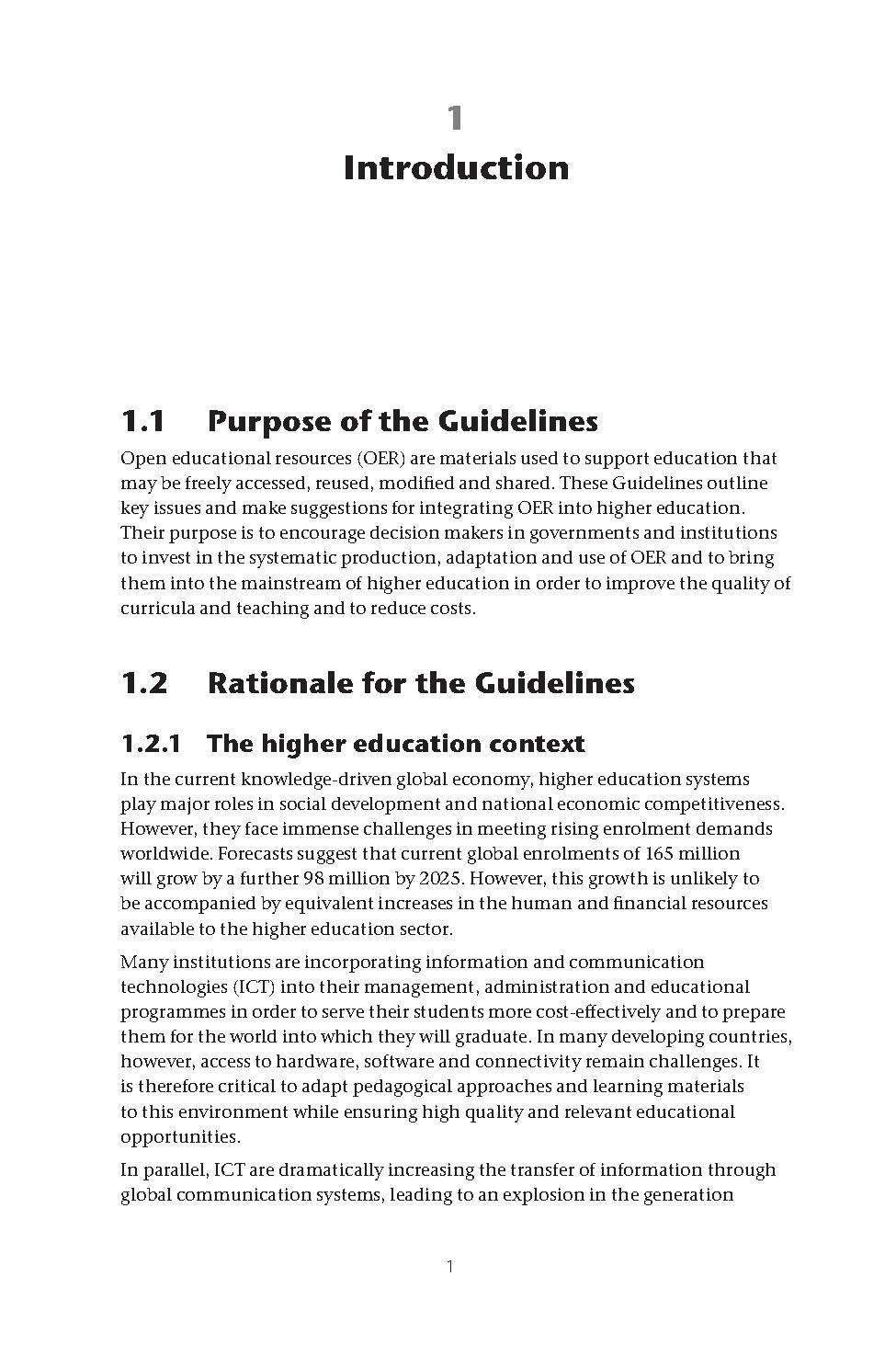1. Introduction
1.1 Purpose of the Guidelines
Open educational resources (OER) are materials used to support education that may be freely accessed, reused, modified and shared. These Guidelines outline key issues and make suggestions for integrating OER into higher education. Their purpose is to encourage decision makers in governments and institutions to invest in the systematic production, adaptation and use of OER and to bring them into the mainstream of higher education in order to improve the quality of curricula and teaching and to reduce costs.
1.2 Rationale for the Guidelines
1.2.1 The higher education context
In the current knowledge-driven global economy, higher education systems play major roles in social development and national economic competitiveness. However, they face immense challenges in meeting rising enrolment demands worldwide. Forecasts suggest that current global enrolments of 165 million will grow by a further 98 million by 2025. However, this growth is unlikely to be accompanied by equivalent increases in the human and financial resources available to the higher education sector.
Many institutions are incorporating information and communication technologies (ICT) into their management, administration and educational programmes in order to serve their students more cost-effectively and to prepare them for the world into which they will graduate. In many developing countries, however, access to hardware, software and connectivity remain challenges. It is therefore critical to adapt pedagogical approaches and learning materials to this environment while ensuring high quality and relevant educational opportunities.
In parallel, ICT are dramatically increasing the transfer of information through global communication systems, leading to an explosion in the generation
1
